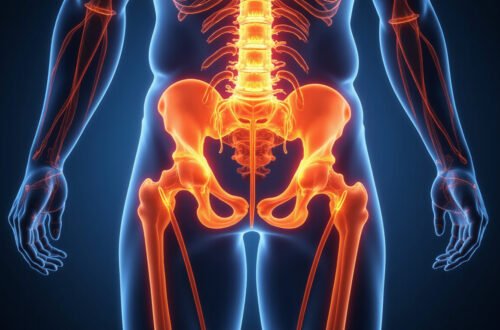Sacroiliac joint pain is a common issue that can affect various individuals, impacting their daily activities and overall quality of life.
Understanding the sacroiliac joint—its anatomy, causes of pain, and effective relief strategies—is crucial for managing this condition.
In this article, we will explore the intricacies of sacroiliac joint pain, from identifying the symptoms to discussing treatment options and preventive measures.
Whether you’ve been suffering from persistent discomfort or are just curious about this type of joint pain, we have valuable insights to share.
Your Sciatica Pain-Free Future Starts Here – Click to Learn More!
Key Takeaways
- The sacroiliac joint connects the lower spine to the pelvis and is crucial for movement.
- Common causes of sacroiliac joint pain include injuries, arthritis, and pregnancy-related changes.
- Symptoms often include localized pain in the lower back, pelvis, and buttocks, which can worsen with certain movements.
- Diagnosis typically involves physical examinations, imaging tests, and assessments of pain patterns.
- Effective relief strategies include physical therapy, medications, and lifestyle adjustments to prevent future pain.
What is the Sacroiliac Joint?
The sacroiliac joint, often referred to as the SI joint, is a crucial yet frequently overlooked component of the human body located at the base of the spine where the sacrum meets the ilium of the pelvis.
This joint plays a vital role in transferring weight and forces between the upper body and the legs during movement, providing stability and support.
However, the sacroiliac joint is also a common source of discomfort, leading many to experience sacroiliac joint pain.
This type of pain can manifest as a dull ache in the lower back, buttocks, or hips, sometimes radiating down the legs.
Understanding the function of the sacroiliac joint and recognizing the symptoms of pain associated with it is essential for effective diagnosis and treatment.
Whether due to injury, arthritis, or biomechanical issues, timely intervention can help manage the condition and alleviate discomfort.
Common Causes of Sacroiliac Joint Pain
Sacroiliac joint pain can be a debilitating condition that affects many individuals, often creating discomfort in the lower back and hips.
The sacroiliac joints, located at the junction of the spine and pelvis, are responsible for transferring weight from the upper body to the legs.
Several common causes contribute to this type of pain.
One of the most prevalent reasons is injury or trauma to the area, which can occur as a result of a fall, car accident, or sports activities.
Additionally, conditions such as arthritis or inflammation can lead to sacroiliac joint pain by wearing down the cartilage and surrounding tissues.
Pregnancy is another factor, as the hormonal changes can cause ligaments to become more lax, resulting in instability.
Repetitive movements or prolonged postures can also strain the sacroiliac joints, leading to discomfort.
Recognizing these causes is essential for effective management and treatment.
‘Pain is inevitable. Suffering is optional.’ – Haruki Murakami
Identifying Symptoms of Sacroiliac Joint Pain
Sacroiliac joint pain can be a significant source of discomfort for many people, often leading to confusion as it can mimic other conditions.
To identify symptoms of sacroiliac joint pain, pay attention to localized discomfort in the lower back and buttock area, which might extend down the legs.
Patients often report a sharp or dull ache, especially when transitioning from sitting to standing or during stair climbing.
Additionally, you may experience stiffness or a sense of instability in your pelvis, as well as occasional tingling or numbness spreading down the legs.
It’s crucial to recognize these signs early, as addressing them promptly can prevent further complications and improve your overall quality of life.
Your Sciatica Pain-Free Future Starts Here – Click to Learn More!
Diagnosis: How is Sacroiliac Joint Pain Determined?
Diagnosing sacroiliac joint pain involves a comprehensive approach by healthcare professionals to accurately pinpoint the source of discomfort.
Initially, a thorough medical history and physical examination are conducted, where the doctor will assess your symptoms, any previous injuries, and your overall health.
They may then perform specific tests that target the sacroiliac joint, such as the Fortin’s finger test or the FABER (Flexion, ABduction, and External Rotation) test, to elicit pain and confirm if it originates from this joint.
Imaging studies, such as X-rays or MRI, may be utilized to rule out other causes of pain, such as fractures or arthritis.
Ultimately, a precise diagnosis is essential for developing an effective treatment plan tailored to alleviate sacroiliac joint pain and enhance your quality of life.
Treatment Options: Relief Strategies for Sacroiliac Joint Pain
When it comes to managing sacroiliac joint pain, a range of treatment options are available to provide relief and improve quality of life.
Physical therapy is often the first line of defense, incorporating exercises aimed at strengthening the muscles around the pelvis and lower back, enhancing stability.
In addition, medication options like nonsteroidal anti-inflammatory drugs (NSAIDs) can help alleviate pain and reduce inflammation.
For more severe cases, corticosteroid injections directly into the sacroiliac joint may offer significant relief, temporarily reducing pain and allowing patients to engage more fully in their rehabilitation efforts.
Alternative therapies like chiropractic adjustments and acupuncture can also be effective in relieving discomfort and improving mobility.
It’s crucial for individuals suffering from sacroiliac joint pain to consult with a healthcare professional to devise a personalized treatment plan that addresses their specific needs.
FAQs
What is the sacroiliac joint and where is it located?
The sacroiliac joint is located in the lower back, connecting the sacrum (the triangular bone at the base of the spine) to the ilium (the upper part of the pelvis).
It plays a crucial role in transferring weight and forces between your upper body and lower body.
What are the common causes of sacroiliac joint pain?
Common causes of sacroiliac joint pain include inflammation, injury from falls or impact, arthritis, pregnancy-related changes in the pelvis, and conditions such as scoliosis that affect pelvic alignment.
What symptoms should I look for if I suspect sacroiliac joint pain?
Common symptoms include lower back pain, pain in the buttocks or hips, discomfort that radiates to the legs, and stiffness or difficulty moving after sitting for a long period.
How is sacroiliac joint pain diagnosed?
Diagnosis typically involves a physical examination by a healthcare provider, a review of medical history, and possibly imaging tests such as X-rays or MRIs to rule out other causes of pain.
What treatment options are available for sacroiliac joint pain?
Treatment options include physical therapy, pain relief medications, corticosteroid injections, chiropractic adjustments, and in some cases, surgical interventions.
Lifestyle changes and targeted exercises can also help relieve and prevent pain.






